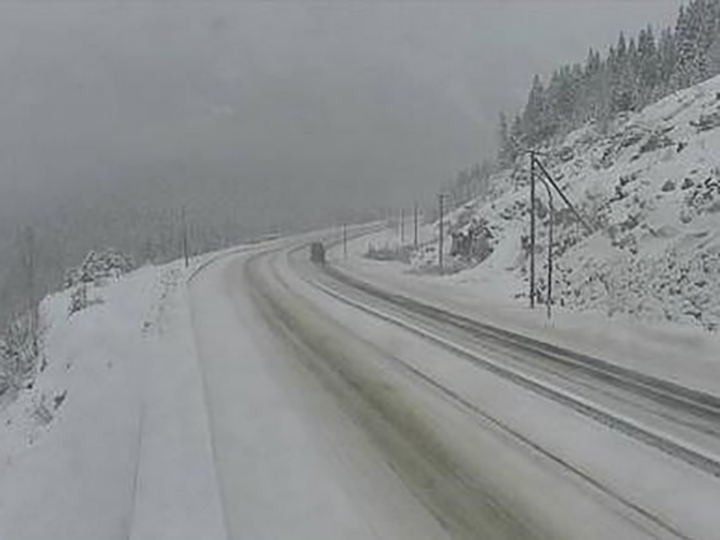Be careful — and properly equipped — when motoring along B.C.’s highways and mountain passes during winter weather.

That’s the advice of B.C. Highway Patrol (BCHP), who say as daylight hours get shorter and snow blankets well-travelled mountain passes like the Coquihalla Highway, driver safety is of utmost importance.
“There is a heightened concern for traffic safety, particularly during the winter months,” said Insp. Dale Somerville.
“The Coquihalla has extreme changes in weather and, with its high mountain passes, it’s always important to have the right equipment and be prepared for a worst-case scenario.”

Along with driving relative to road conditions, police say vehicles should be equipped with good winter tires, along with windows that are free of frost and snow.
Winter tread (including M and S tires) are required in B.C. when driving along mountain passes from late fall to early spring.
Below are tips from B.C. Highway Patrol regarding winter driving.
- Check your tires to ensure they are in good condition, have sufficient tread depth, and are properly inflated.
- The weather can change rapidly and unpredictably.
- Turn your headlights to the ON position.
- Taillights do not turn on with your daytime running lights.
- Taillights are an important part of being seen from behind, especially in winter when days are shorter and rain, fog and grey days are common.
- Make sure all your lights, signals and brake lights are fully functional.
- Increase the distance between you and vehicles ahead to give yourself more time to stop.
- This is important, especially if it is raining, snowing, slippery, foggy, or it’s night.
- Slow down, especially when visibility is limited and road conditions are treacherous.
- Posted speed limits assume ideal driving conditions.
- Watch out for black ice as temperatures drop to freezing.
- Ensure that you have enough windshield washer fluid to keep your windshield clear.

In related information, BCHP says officers will, from time to time, stop drivers to see if their vehicles are winter compliant.
They also say should your vehicle be involved in a collision, officers will also be inspecting it to see if it has winter tires on.

One website dedicated to road safety says winter weather and road conditions push driving skills to the limit.
SIW-Learn-How-to-Drive-in-Winter-Conditions
SIW-Prepare-Your-Vehicle-for-Winter-Weather
“Adjusting our driving to the conditions we face can help reduce the risk of crashing,” says the Winter Driving Safety Alliance. “Reducing our speed is just one of the steps that can keep us safe on snowy or icy roads.”
Further information about winter driving can be found at Road Safety at Work.





Comments